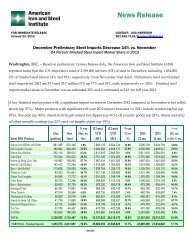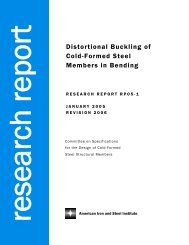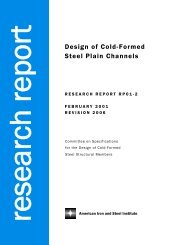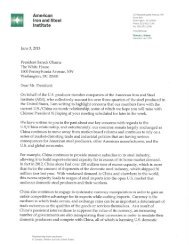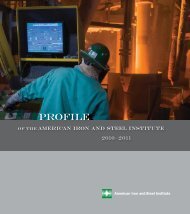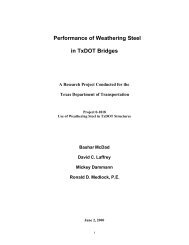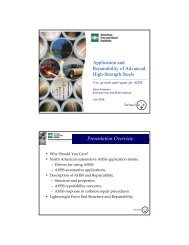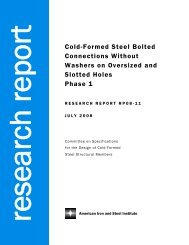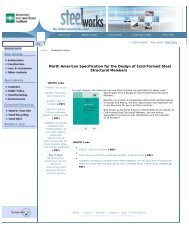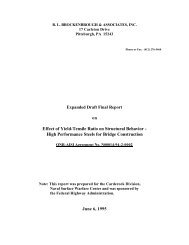Statistical Analysis of Structural Plate Mechanical Properties (Part 1)
Statistical Analysis of Structural Plate Mechanical Properties (Part 1)
Statistical Analysis of Structural Plate Mechanical Properties (Part 1)
Create successful ePaper yourself
Turn your PDF publications into a flip-book with our unique Google optimized e-Paper software.
2.3 PROPERTIES TO BE STUDIED<br />
In the statistical analyses, data on the following six properties were studied:<br />
1. Carbon Equivalent<br />
2. Yield Strength<br />
3. Tensile Strength<br />
4. Yield to Tensile Ratio<br />
5. Yield Strength to Yield Point Ratio<br />
6. Charpy V-Notch toughness<br />
2.3.1 CARBON EQUIVALENT<br />
The carbon equivalent <strong>of</strong> a steel is a chemical property that indicates its<br />
weldability or the ease with which the steel can be welded using a conventional method.<br />
The higher the carbon equivalent <strong>of</strong> a steel, the more difficult it is to weld and the higher<br />
the chance <strong>of</strong> producing microstructures, for instance, martensite which is susceptible to<br />
brittle fracture (ASTM A6/A6M).<br />
The carbon equivalent (CE) <strong>of</strong> a steel (given in percent weight) may be computed<br />
with the help <strong>of</strong> the following equation:<br />
Mn (Cr + Mo + V) (Ni + Cu)<br />
CE = C + +<br />
+<br />
(2.1)<br />
6 5 15<br />
where C, Mn, Cr, Mo, V, Ni and Cu are the percent weights <strong>of</strong> Carbon, Manganese,<br />
Chromium, Molybdenum, Vanadium, Nickel, and Copper, respectively, in the steel<br />
(ASTM A709/A709M). The carbon equivalent is a property <strong>of</strong> the heat; hence, all plates<br />
in the same heat have the same carbon equivalent. Current ASTM standards for grades<br />
A572 and A588 steel do not specify requirements for the carbon equivalent value.<br />
2.3.2 YIELD STRENGTH<br />
The yield strength is defined by ASTM A370 as “the stress at which a material<br />
exhibits a specified limiting deviation from the proportionality <strong>of</strong> stress and strain”. The<br />
yield strength values used in this study are based on the use <strong>of</strong> a 0.2% <strong>of</strong>fset. Current<br />
ASTM Specifications <strong>of</strong> A572 and A588 grade 50 steel specify a minimum yield point <strong>of</strong><br />
10



